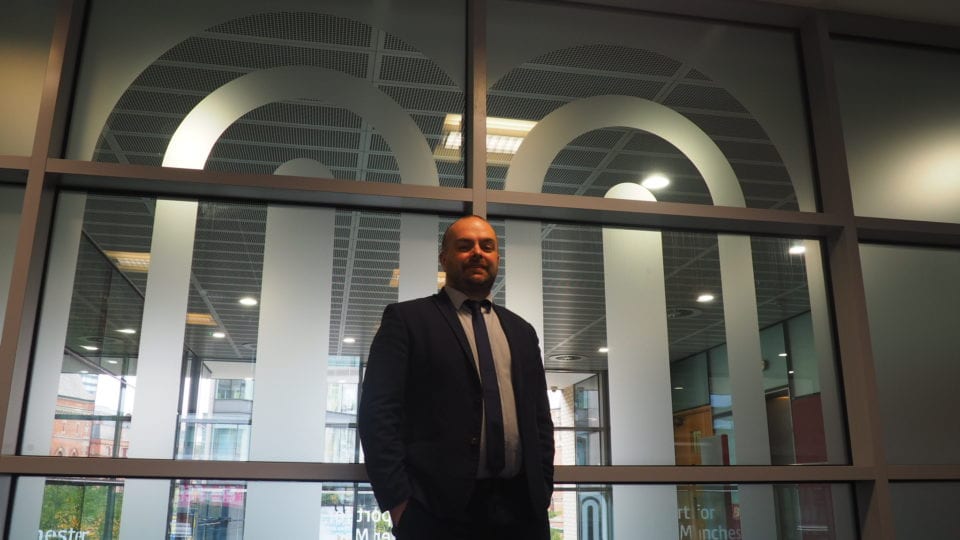When two worlds align
Kevin Toye, advanced solutions manager at Transport for Greater Manchester (TfGM), talks about the importance of aligning both the energy and transport sectors to allow the industry to keep up with the take-up of ultra-low emission vehicles (ULEVs).
2nd January 2019 by Networks

Published in July 2018 the Road to Zero Strategy is the government’s ambitious plan to see at least half of new cars be ultra-low emission vehicles (ULEV) by 2030. Its broad range of measures seek to ensure not only a cleaner, better environment, but an economy built to benefit from this innovation. Its implementation will help deliver the UK Industrial Strategy’s key aims of cleaner growth and a country at the forefront of the future transport sector.
It is clear that much of the early success in stimulating growth in ULEV take-up and infrastructure deployment has been shouldered by the Office for Low Emission Vehicles (OLEV) in partnership with city-regions through targeted competitive funding. This approach has been incredibly beneficial as shown by the rapid consumer take up of ULEVs, with demand only being tempered by a yet to be resolved supply constraint for some vehicle models.
As more ULEVs hit our roads some of the initial barriers to take-up, such as ‘range anxiety’ continue to dissipate as people become more familiar with the technology, and the advances, such as larger batteries, that have been made. But challenges still remain. These include accurately predicting consumer demand; delivering the required power supply and capacity to support; defining charging point locations and what charging power to deploy (standard, slow, fast, semi-rapid, ultra-rapid); and charging point type to deploy. Steps must also be taken to ensure the infrastructure/locations are futureproofed to meet forthcoming advancements in the sector. It is clear from the above that the energy and transport sectors are becoming increasingly aligned and effective partnership working must be put in place (if not already done so) between the charging infrastructure operators and respective district network operators.
Alongside this, and aligned with the UK Industrial and Road to Zero strategies, a number of over-arching and supportive innovative policies and approaches should be considered:
- Load management: including techniques to balance usage, control charging times and manage grid capacity.
- Vehicle 2 Grid: how this technology could be applied and where it would benefit most.
- Customer incentives: including encouraging drivers to charge at particular posts and at particular times.
- Demand side supply: such as deploying grid buffer innovations such as battery storage units.
- Enhanced infrastructure: including additional battery storage.
- Open data: including the ability to use Open Data API in digital mobility platforms, such as Mobility As A Service (MaaS).
- Interoperability: the ability to support a wider charging network through interoperable systems.
- Innovative infrastructure solutions: the ability to pilot new innovative, high-capacity infrastructure.
- Location modelling: innovative approaches to determine the optimum locations for charging infrastructure.
This is obviously a complex policy environment to navigate and transport bodies need to take a strategic and partnership-based approach. At TfGM we have been addressing the challenges above in a number of ways. Since 2013 we have led on deploying Greater Manchester’s public charging infrastructure (GMEV network). From this approach we have gained direct experience of deploying and managing a charging network and engaging with the market and key stakeholders to understand evolving trends and changes in technology and demand. More recently TfGM had initiated a formal procurement process to appoint a supplier to refresh the existing charging stock and expand electric vehicle charging infrastructure across the region. We are looking for a supplier to refresh and expand the existing network. Both public and private landowners have been invited to submit applications for charger locations to us and we have created a bespoke GIS-based EV charger location model to map and prioritise requests.
Ultimately the key message is that ULEV take-up is growing at pace, EV technology continues to rapidly evolve and the future deployment of charging infrastructure and the growth of ULEVs requires effective public and private partnership working to ensure measures are in place to support the continued decarbonisation of transport.
Comments
Login on register to comment
Related content

Power
The future for vegetation management
Why networks should focus on data not trees to overcome the costly challenges involved in vegetation management

Power
An unprecedented opportunity for change
Why short interruptions will matter in RIIO-ED2 and how to address them.

Power
Time for less talk and more action on decarbonisation
Core "oven-ready" solutions to decarbonising heat and transport exist today and should be implemented without delay, says WPD's future power networks expert.
Related supplier content

Power
Load patterns and lockdown: how Covid-19 is impacting electricity networks
Insights into dynamics on the low voltage network as the outbreak unfolds

Downloads
Protect electrical equipment from insulation failure
Insulation faults are a major cause leading to the eventual failure of electrical equipment. Partial discharge (PD) is a very reliable indicator of developing insulation faults. Regular PD testing allows users to detect and analyze PD activity

Heat
How E.ON. is helping the City of London become a zero emissions city
Discover Citigen. Deep in the heart of our bustling capital